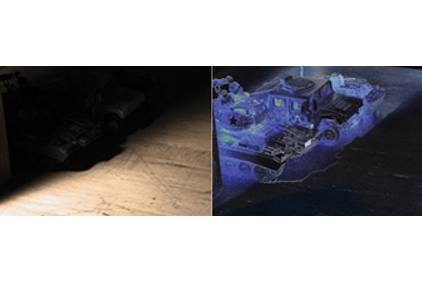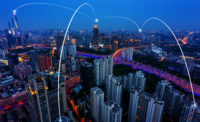While world economies face additional challenges and unemployment seems chronic, many enterprises, often awash in cash, have increased their investment in computer and communications technologies. According to Gardner Research, worldwide IT spending is forecast to total $3.67 trillion in 2011, a 7.1-percent increase from $3.43 trillion in 2010. Gartner has raised its outlook for 2011 from its previous forecast of 5.6 percent growth.
With security systems more closely tied to IT, it seems there will be more emphasis on intelligent security technologies such a smart video, analytics and integration among systems and into the enterprise infrastructure.
Things to Avoid
Still there are pitfalls when depending too much on the intelligence of the system, according to Jim Elder of TranSystems, the Kansas City-based services consulting firm that focuses on the secure and efficient movement of people and goods,
He shared with me the nine ways he views the technology, its uses and dangers to avoid.
|
1. Categories of use: In my view, there are three general categories of use: prevention (i.e. stopping something from happening); detection (when it happens you want to know about it); and investigation. 2. Impact of megapixel cameras: Better resolution equals better accuracy and less false activation. 3. Analytics as a replacement for typical intrusion sensors: The technology is only as good as the video image it “sees.” If there is fog, heavy rain, or other conditions, analytics might not work as well. 4. False alarms: Probably the most problematic issue with analytics, in my opinion, false alarms could undermine the credibility for some users. The operator needs to understand the application, how it is set up, and the basic conditions that impact detection. 5. Counting: Great application, as long as accuracy is not a huge issue. I had a great application for this in a job in New York, where they needed to count the number of occupants in an “area of assembly” to ensure they did not exceed the placarded number. 6. Street corner cameras: Since city-run camera systems are becoming more ubiquitous, I know that a number of cities are looking into analytics for various purposes, including counting and queuing applications for traffic management. One analytic rule that should be big is loitering. I can certainly imagine using this analytic rule to help control gangs. 7. Use with PTZ cameras: Obviously, activating a PTZ with analytics enabled will cause false alarms. That said, I have used analytics with PTZ cameras as long as the analytics is used with a preset. 8. Leveraging video analytics for sales behaviors: I can see plenty of application of behavioral analytics to study how customers react to sales displays as well as inventory. Rules such as loitering and counting come to mind here, too. 9. Cost reduction: If you have more intelligent systems, odds are good you could reduce cost of personnel by making them more efficient. In addition, analytics could mean fewer cameras, servers, monitors. This would also allow a reduction in infrastructure cost and power to cool server rooms. |
Beyond Elder’s advice, there are a number of video advances, including polarization.
Demand for More Details
Images formed by intensity-coding the degree of polarization allow security systems to detect things that conventional cameras cannot. For example, according to Emergent Views of San Francisco, viewing a scene in terms of its polarization characteristics has the useful property of seeing into shadows. Conventional intensity-based imaging has difficulty extracting detail when there is high contrast between the lit and shaded sections of the scene. Either the shaded area is dark or the illuminated area is washed out. Because polarization is intensity-independent, however, both lit and shaded sections can contribute image detail equally.

|
|
High illumination contrast can mask image detail that is clearly visible in a polarization view. |
Polarization imaging can even see through mist and other obscuring conditions. While the scattering of light by suspended particulates can quickly randomize intensity information within a scene, it has substantially less effect on polarization. As a result, a polarization imager can resolve object detail at more than twice the range of conventional imagers under such conditions.

|
|
Scattering conditions such as fog degrade contrast in conventional imaging, but has substantially less effect on polarization. |
Polarization cameras have, in the past, utilized beam splitters or rotating filters to separate a scene’s polarization components for image formation. Advances in micro technology, however, now allow fabrication of polarization filters comparable in size to the individual pixels of an imager, much like the color filters in conventional imagers. This has allowed some cameras to offer the benefits of polarization imaging in much more robust and lower-cost packages than were previously possible.




